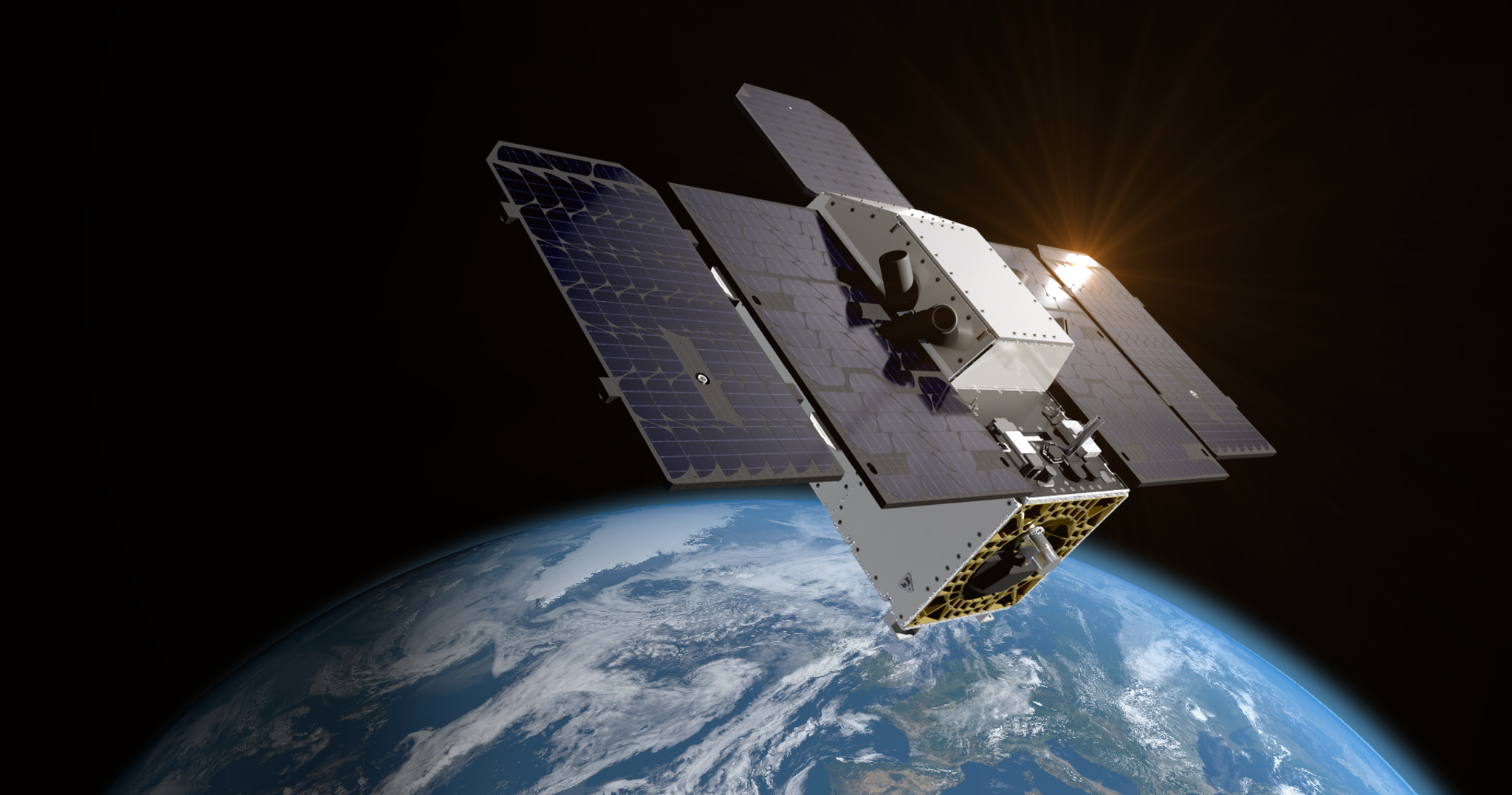Agile Aerospace Innovation: Leveraging synthetic data in satellite data product development
The use of synthetic data to facilitate machine learning development has been growing over the past few years. It is used by many major technology companies to do things as varied as build guidance for autonomous vehicles, develop insights for the financial sector, and extend and enhance healthcare applications. Synthetic data is simulated using a number of physical process models and labeled to be as realistic as possible to support machine learning (ML) model training.
Rendered.ai are experts in this space, and create simulated data across a variety of applications and industries with their platform-as-a-service for generating synthetic data. While typically synthetic data is used to train machine learning models, the Planet Hyperspectral team is leveraging synthetic data in an innovative way - to facilitate satellite data product development in advance of the satellites in orbit. Planet has partnered with Rendered.ai to develop and build out synthetic scenes. The simulated hyperspectral data provided by Rendered.ai allows Planet’s customers to provide early feedback prior to launch.
“Planet is leading the way with an innovative approach to constellation design – using synthetic data to build customer value before their hyperspectral constellation launches. We founded Rendered.ai to support engineers who need to build analytics tools but who can’t get the data they need. This gap is critical when building an innovative satellite constellation. How can you perform engineering trades when customers want insights, not pixels? It’s not enough to design, launch, collect real data and hope for the best 6-12 months later. Planet knows this and it has been a pleasure to partner with them and leverage the Rendered.ai platform to meet their data needs," said Nathan Kundtz, CEO of Rendered.ai.
In addition, Planet is leveraging this data for internal R&D to test the effects of various operational modes, such as view angle, and scene conditions on downstream product quality. Instead of leveraging these data sets to build machine learning applications, Planet is leveraging this realistic data for application and product development to minimize the product development process post launch.
Sarah Shivers, Senior Product Manager for Planet’s Hyperspectral Offering, says “What's really exciting about our partnership with Rendered.ai is that they've given us the capability to quickly and easily generate simulated acquisitions over varied land cover types and scene conditions so that we can understand the capabilities of our system and get physically-accurate data into the hands of customers before we get any hardware into space. This allows us to closely work with customers ahead of launch to accelerate product testing and development, which could result in higher quality products coming to our customers on Day 1!”
This unique collaboration with Rendered.ai is helping Planet strengthen its ability to address program risk, speed up time to market, and provides a valuable avenue to have meaningful conversations with customers before systems are on-orbit.
“Coming from a background in autonomous vehicles and computer vision technologies,” says Elizabeth Foughty, the Product Marketer responsible for Planet’s Hyperspectral Offering. “I was delighted to learn of the planned use of synthetic data to do product development prior to launch and to put to use in our early market building efforts. I feel that Planet’s innovative application of synthetic data will deeply benefit the earth observation data space. Customers familiar with synthetic data are responding extremely well, and while there is a learning curve for those less familiar, it’s been a fun one!”
This innovative approach is a component of Planet’s groundbreaking Hyperspectral offering. From the novel public-private partnership, with the non-profit organization Carbon Mapper, that funded the satellite build out, to the agile aerospace approach to development of new satellite programs, Planet is leveraging cutting edge technologies to support the increased usage of earth observation to solve some of the world’s biggest challenges.
Interested in learning more? https://www.planet.com/products/hyperspectral/
Forward-looking Statements Template
Except for the historical information contained herein, the matters set forth in this blog are forward-looking statements within the meaning of the "safe harbor" provisions of the Private Securities Litigation Reform Act of 1995, including, but not limited to, the Company’s ability to capture market opportunity and realize any of the potential benefits from current or future product development efforts, including internal R&D and customer outreach, product enhancements, new products, or strategic partnerships and customer collaborations. Forward-looking statements are based on the Company’s management’s beliefs, as well as assumptions made by, and information currently available to them. Because such statements are based on expectations as to future events and results and are not statements of fact, actual results may differ materially from those projected. Factors which may cause actual results to differ materially from current expectations include, but are not limited to the risk factors and other disclosures about the Company and its business included in the Company's periodic reports, proxy statements, and other disclosure materials filed from time to time with the Securities and Exchange Commission (SEC) which are available online at www.sec.gov, and on the Company's website at www.planet.com. All forward-looking statements reflect the Company’s beliefs and assumptions only as of the date such statements are made. The Company undertakes no obligation to update forward-looking statements to reflect future events or circumstances.

Ready to Get Started
Connect with a member of our Sales team. We'll help you find the right products and pricing for your needs


